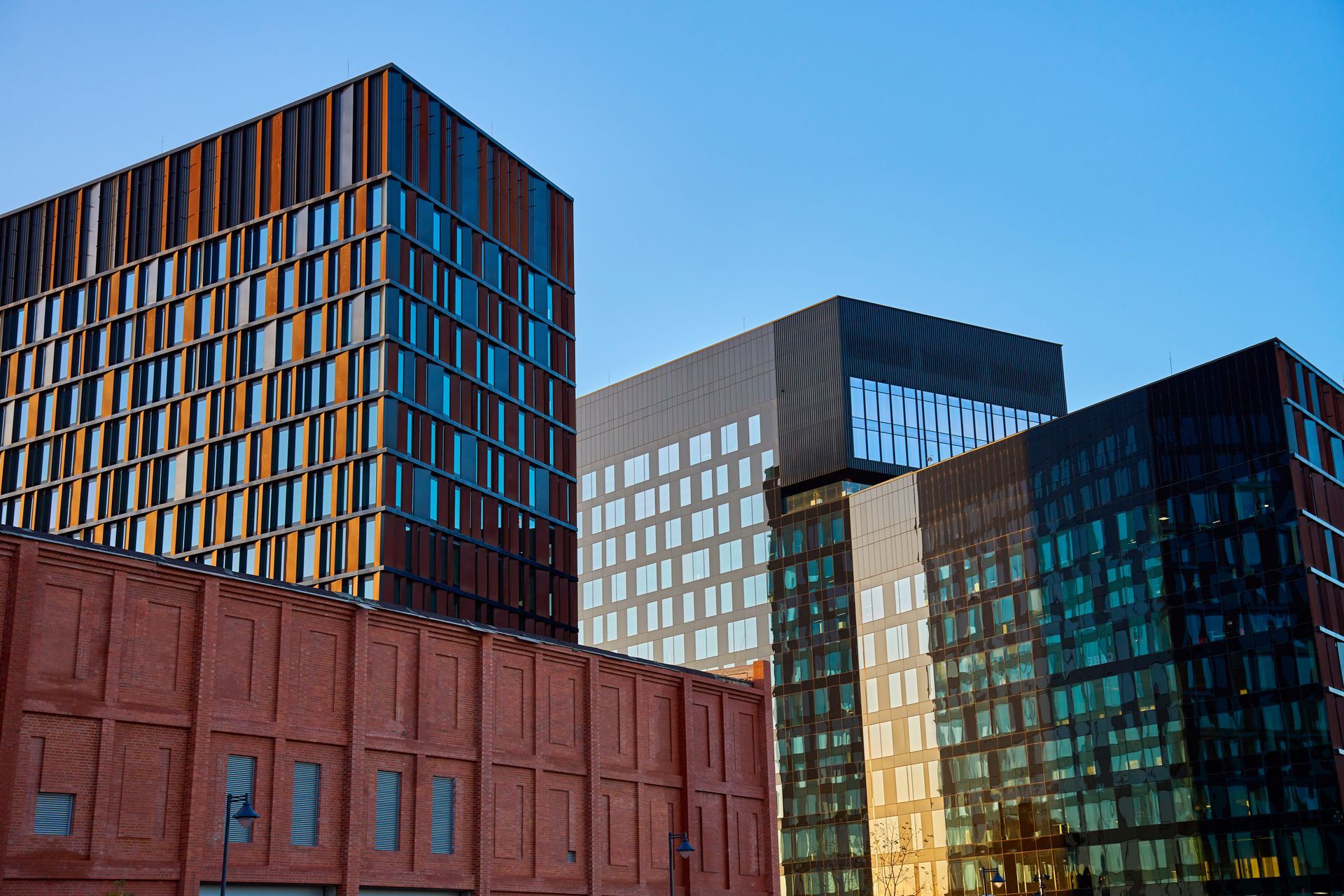By Melissa Jonhnson
•
September 15, 2025
US job growth is slowing down In the last four months of 2024, the US economy generated 868,000 new jobs. Then, in the first four months of 2025, the US economy generated 491,000 new jobs. Now, we learned that, in the most recent four months of 2025 , the economy generated only 107,000 new jobs. The latest employment report, which was released at the time of writing, revealed a labor market that is slowing, raising questions about economic growth in the second half of 2025. The US Department of Labor releases a monthly report based on two surveys: one is a survey of establishments; the other is a survey of households. Let’s look at the data: 1.First, let’s look at the establishment survey. It indicated that, in August, only 22,000 new jobs were created from the previous month. Moreover, the June and July numbers were revised, with the new data showing a decline in employment in June but somewhat faster employment growth for July than previously reported. In August, job growth was either feeble or negative in most industries. The major exceptions were health care and social assistance (up 46,800), and leisure and hospitality (up 28,000). When these two categories are excluded, the numbers show that there was a sharp decline in employment in August. By industry, employment was down 7,000 in construction, down 12,000 in manufacturing, down 5,000 in information, down 3,000 in financial services, down 17,000 in professional and business services, and down 16,000 in government. Why was job growth slow in recent months? Among the explanations are the impact of tariffs on expectations for demand; the impact of tariff uncertainty on business investment; and the impact of immigration policy on labor supply. The establishment survey also provides data on earnings. It indicated that, in August, average hourly earnings of private sector workers were up 3.7% from a year earlier—the second lowest rate of increase since May 2021. Thus, wage pressure is gradually easing, given the weak demand for labor. Fortuitously for workers, earnings are rising faster than inflation, thereby boosting household purchasing power. Even as demand for labor decelerates, the supply of labor is falling, in part due to restrictive immigration policy. However, if inflation accelerates sharply due to tariffs, it will undermine consumer purchasing power. 2. The separate household survey offered a somewhat more favorable view of the job market. The household survey includes data on self-employment. The survey found that the labor force grew faster than the working-age population, leading to a small increase in the rate of participation. Yet employment grew considerably more slowly than the labor force, thereby leading to a slight increase in the unemployment rate. It hit 4.3%—the highest since October 2021. There was a sharp increase in the unemployment rate for workers lacking a high school education but no change for college graduates. Thus, it appears that unskilled workers are facing obstacles to employment. In response to the jobs report , the yield on the US Treasury’s 10-year bond fell to 4.1%—the lowest in 10 months. This reflects expectations that the economy is weakening, thereby reducing inflationary pressures and increasing the likelihood of the Federal Reserve easing monetary policy. Equity prices fell as well. What about the Fed? The futures markets are now pricing an 89% probability that the Fed will cut the benchmark rate by 25 basis points this month and a 10% chance of a 50-point cut this month. Moreover, there is a 91% probability that the Fed will cut the rate two or three times before the end of the year, and a zero likelihood of no rates cuts by December. This includes a 64% probability of three rate cuts by the end of the year. In other words, many investors are now highly optimistic that the Fed may engage in an aggressively easy monetary policy. In the United States, the number of job openings fell in July from the previous month, hitting the lowest level since September 2024. The largest decline was in the South followed by the Northeast. The West saw an increase in job openings. The job openings rate (share of available jobs that are unfilled) hit 4.3% in July. This is the same as in March 2025 and September 2024. The job openings rate has not been lower than this since May 2020, at the height of the pandemic. This indicates a weakening of the job market. On the other hand, the labor market remains relatively tight compared to the pre-pandemic period. In most of the two decades prior to the pandemic, the job openings rate was lower than it is now. The current tightness reflects demographics and, lately, a shift in immigration policy. That is, labor force growth has slowed while demand for labor has slowed as well. By industry, the job openings rate was highest in information, accomodation and food service, and professional business services. The rate was lowest in mining, wholesale trade, and durables manufacturing. From a year ago, the overall job openings rate fell from 4.5% to 4.3%. However, in some industries, there was a notable increase in the job openings rate. These industries included construction, transportation and warehousing, information, and accomodation and food service. Some of these industries are heavily dependent on migrant labor. The drop in immigration and the increase in deportations might explain some of this increase. It could also lead to stronger wage pressure in these industries, thereby exacerbating inflation. On the other hand, some industries saw a sharp decline in the job openings rate. These included mining, durable goods manufacturing, and health care and social assistance. The decline for manufacturing could be related to trade uncertainty and disruption. The state of the US job market has weakened. Still, the job openings rate is relatively high while the unemployment rate is relatively low. Thus, it is not clear if the weakness is sufficient to cause concern about the economy being sufficiently weak, to warrant an easing of monetary policy. The Federal Reserve has a dual mandate to seek low inflation and maximum employment. Currently, inflation is above the Fed’s target and appears to be accelerating while employment growth has eased. Thus, the Fed faces a trade-off. Meanwhile, one sign of economic strength is that financial market conditions in the United States are relatively favorable. This is evidenced by the national financial conditions index published by the Federal Reserve Bank of Chicago. That index shows that, currently, the United States has the most favorable financial market conditions since November 2021, during the pandemic. This is due to the lagged effect of the Fed’s easy monetary policy, which began in 2024. Given that conditions are so favorable, it is not clear that it makes sense to ease policy further at a time when inflation is a growing concern. Prior to the pandemic, the index was even more favorable in the 2018-to-2020 time frame. Yet that was a time of historically low inflation. As such, there was no need to tighten monetary policy at that time. On the other hand, household financial conditions have worsened, with the delinquency rate on credit card debt now at the highest level since just after the global financial crisis in 2011. The delinquency rate on automotive loans has also increased considerably. Plus, the end of the moratorium on student debt has led to a further increase in financial stress for student debtors. The challenges faced by the household sector provide an argument in favor of monetary easing. As indicated above, it is nearly a certainty that the Fed will cut the benchmark interest rate later this month, likely starting a gradual process of easing monetary policy. This could come in conjunction with a further acceleration in inflation. That would be an unusual combination of events. The latest on China US Treasury Secretary Bessent recently said that foreign companies are eating the tariffs, thereby reducing the impact on US importers and US households. Yet, with respect to China, a study conducted by China International Capital Corporation (CICC) suggests otherwise. Specifically, CICC found that Chinese exporters have absorbed only 9% of the US tariffs. For example, from April through July, Chinese exporters cut their prices by 2.4% while the United States imposed an effective tariff rate of 27% on imports from China. This means that the absorption of the tariffs is mostly taking place on the US side of the Pacific Ocean. CICC suggests that US importers are largely absorbing the cost and not yet fully passing on the cost to their US customers. CICC commented that “US importers, sandwiched in the middle of supply chains, find it difficult to fully pass costs to the end market or shift the burden entirely to exporters, so they cope by compressing profit margins.” My view is that, ultimately, these importers will likely push the cost onto their customers in the United States, thereby avoiding a sustained compression of profits. Meanwhile, it has been reported that exporter absorption of tariff costs has been much greater in Southeast Asia and Europe, than in China. CICC says this reflects the highly competitive nature of Chinese exports. Still, Chinese exports to the United States are down sharply as many importers are frustrated with much higher prices. It is reported that Chinese exporters are struggling to sell to the United States, worried that weak sales will result in idle factories. China’s role in the world is adjusting in response to the disruption of US trade policy. In recent years, the US government was concerned about the growing economic and geopolitical footprint of China in the Asia-Pacific region. In response, the United States intensified alliances with like-minded countries. Of particular note was the creation of the so-called “Quad,” a military/intelligence alliance involving the United States, Japan, Australia, and India. In addition, the United States encouraged private business to “de-risk” from China by diversifying supply chains and shifting processes from China to Southeast Asia and India. Now, things are changing. And it largely reflects the impact of a shift in US trade policy toward India. Until recently, the United States worked hard to deepen ties with India, largely as an offset to the rising power of China. Yet relations have soured following the imposition of a 50% tariff on imports from India. The stated reason for the 50% tariff was Indian purchases of Russian oil. India has indicated it will not back down. Meanwhile, China has taken advantage of the situation by trying to enhance relations with India as well as Russia. Last week, the leaders of all three countries were together in China. China’s leader said that the three countries should be partners. This was the first visit of India’s prime minister to China in seven years. Chinese equity prices hit a 10-year high this week as investors exhibited optimism about the business environment despite the challenge of uncertain trading relations with the United States. In addition, China’s money supply is growing at a rapid pace, thereby boosting liquidity. This often has a positive impact on asset prices. Relatively easy monetary policy has evidently played a role in boosting equities. Meanwhile, it is reported that China’s savers—with their US$22 trillion in liquid assets—are shifting from fixed-income products to equities, betting that China’s technological prowess will pay off for investors. In addition, it is reported that global investors are becoming more interested in Chinese equities. The yield on China’s 10-year government bond is currently about 1.7% while the one-year deposit rate offered by commercial banks is only 1%. Thus, equities have become very attractive. Notably, global equities have done well lately—not just those of China. The US equity market, for example, has been especially strong despite signs that the economy is likely weakening. In the United States, equity market strength is probably related to optimism about generative AI. Also, the Chinese economy continues to show signs of weakness. Equities are not likely to remain frothy if the economy doesn’t start to rebound. Still, investors are evidently betting that China’s growing strength in key technologies will pay off. Inflation accelerates in the eurozone In the 20-member eurozone, consumer price inflation accelerated slightly in August. Prices were up 2.1% from a year earlier—the highest rate of inflation since April. When volatile food and energy prices are excluded, core prices were up 2.3% from a year earlier—the same as in each of the previous three months. Thus, underlying inflation is stabilizing at a relatively low level. Notably, the price of services was up only 3.1% from a year earlier—the lowest level since March 2022. The high level of services inflation had been a major concern for the European Central Bank (ECB). Now that it is coming down, it sets the stage for sustained low inflation. However, the fact that underlying inflation has stalled above the ECB’s 2% target adds strength to the argument that the ECB will not cut the benchmark interest rate again during 2025. For now, futures markets are pricing in a 50% probability of a rate cut by the end of the year. The ECB’s policy committee will meet in September and December. Most analysts expect no rate cuts in September. Indeed, at the last policy meeting, ECB President Lagarde said the central bank has a “wait and watch” policy. One reason for the ECB’s hesitation is the US policy of tariffs. While the tariffs directly increase prices for US households and businesses, there can be an indirect impact on prices in other countries. Isabel Schnabel, who serves on the ECB’s governing council, said that “if you have an increase in input prices globally due to tariffs, and these propagate through global production networks, this will increase inflationary pressures everywhere.” As such, she said that, for the eurozone, “the balance of risk” is “tilted to the upside.” Potential changes to the Fed President Trump’s recent announcement that he intends to remove Fed Governor Lisa Cook led to a decline in the yield on the two-year bond (signaling an expectation of a looser monetary policy) and an increase in the yield on the 10-year bond (signaling an expectation of higher inflation). Cook has indicated that she will fight the effort to remove her. The President has said that the benchmark interest rate should be cut by 300 basis points while Treasury Secretary Bessent said it should be cut by 150 basis points. Either way, this would lead to a sharply negative inflation-adjusted rate at a time when inflation is rising. That would be highly unusual. Theoretically, lower rates could boost the economy, at least temporarily. As a recap, the primary policymaking body at the Fed is the Federal Open Market Committee (FOMC). It is composed of the seven members of the Board of Governors (all of whom are appointed by the President and confirmed by the Senate, and who serve staggered 14-year terms) as well as a rotating group of five of the 12 presidents of regional Federal Reserve Banks. The regional presidents are chosen by the commercial banks that are members of the Federal Reserve system but must be approved by the Board. In addition, the law allows the Board to remove regional presidents. Several regional president’s terms expire in 2026. Aside from Chairman Powell, who was originally appointed by Trump and then re-appointed by President Biden, two members of the Board were appointed by Trump: Christopher Waller and Michelle Bowman. Recently, board member Adriana Kugler resigned and Trump appointed Stephen Miran to replace her. He has not yet been confirmed by the Senate. If Cook is removed, Trump will then appoint a replacement for Cook and will have appointed four members. Next year, he will have the opportunity to replace Powell. Christopher Waller, a member of the Board of Governors of the Federal Reserve, is considered one of the candidates to replace Chair Powell next year. In the past, he seemed predisposed toward a focus on minimizing inflation by keeping interest rates higher than otherwise. Yet in the most recent meeting of the FOMC, he was one of only two members who supported cutting rates. He indicated that he could potentially support a “jumbo” cut to interest rates in September. This could suggest that the Fed will soon move toward a far easier monetary policy. Specifically, although Waller said that he did not “believe that a cut of larger than [0.25 percentage points] is needed in September,” he nevertheless said that his view “could change if the employment report for August, due out [soon], points to a substantially weakening economy and inflation remains well contained.” Waller added that “in July, I argued that, looking through tariff effects, with underlying inflation near target and the upside risks to inflation limited, the FOMC should not wait until the labour market deteriorates before we cut the policy rate. Based on all the data in hand, I believe this argument is even stronger today, and that the downside risks to the labour market have increased.” Although it appears that the Fed will cut its benchmark rate in September, the bigger question involves what the Fed is likely to do in the months to follow. A pivot toward state capitalism in the United States Two weeks ago, the US government took a 10% stake in the largest US-based producer of semiconductors, which has lost market share to foreign competitors. Under the Biden-era CHIPS Act, the US government promised the US-based chip maker grants and loans of as much as US$20 billion, meant to help it boost investment in the United States. This, along with subsidies for other companies, was meant to revitalize US chip-making so that the country would be less dependent on Asia. Will this investment be successful? It is not clear. One estimate suggests the chipmaker will need US$50 billion over the next few years to develop appropriate capacity. At the same time, foreign competitors are making big investments in fabrication plants in the United States, using CHIPS Act subsidies, but are not likely to sell shares to the US government. Meanwhile, chip fabricators in the United States already face a serious shortage of labor with the required skills. One foreign chipmaker is reported to be bringing its own workers to the fabrication plant it developed in the United States. If the investment were a one-off event, it would not necessarily generate much controversy. In 2008, the Bush Administration injected equity into several large banks, the aim of which was to prevent a complete meltdown of the financial system. In 2009, the Obama Administration injected equity in automakers, the goal of which was to prevent a collapse of the US automotive industry. In both cases, the government got out quickly. What the current administration is doing is different. President Trump, speaking about the latest transaction, said , “I will make deals like that for our country all day long. I will also help those companies that make such lucrative deals with the United States.” He described his economic strategy as “to get as much as I can.” Other people within the Administration have offered similar sentiments. Secretary of Commerce Howard Lutnick said that defense contractors could be targeted. Speaking about a large defense contractor, he said : “It makes 97% of their revenue from the federal government. If we are adding fundamental value to your business, I think it's fair for Donald Trump to think about the American people.” Kevin Hassett, director of Trump’s National Economic Council, said, “I'm sure that at some point there will be more transactions, if not in this industry in other industries.” He suggested that such transactions could be the first step toward creating a US government sovereign wealth fund (SWF). The president has said he wants one and has expressed admiration for the SWFs in the Middle East. Meanwhile, the chip transaction is not the only event involving greater US government intervention in the private sector. The government only approved of a Japanese takeover of an American steel company after the company gave the United States a “golden share,” thereby giving the government some influence in the company’s decisions. In addition, the Pentagon has taken a 15% stake in a company that produces a mineral used in high strength magnets. The United States also allowed two US tech companies to sell advanced technology to China if they share the revenue with the US government. Finally, tariffs, and especially tariff exemptions, put the government in a position to influence the private sector. If the US government becomes a shareholder in companies, what are the implications? For example, in China the state-run sector is widely seen as being less innovative and productive than the private sector. There may be constraints on the ability of such companies to dismiss workers, shut down facilities, or offer competitive compensation to executives. Government ownership may influence government decision-making, with the government favoring its own companies over others. If the United States creates an SWF, then it could effectively become operator of something akin to a private equity firm. This means picking investments on behalf of taxpayers. The long US history of a robust and independent private sector has often been seen as one of the sterling attributes of the US economy. Changing it has considerable risks.





























